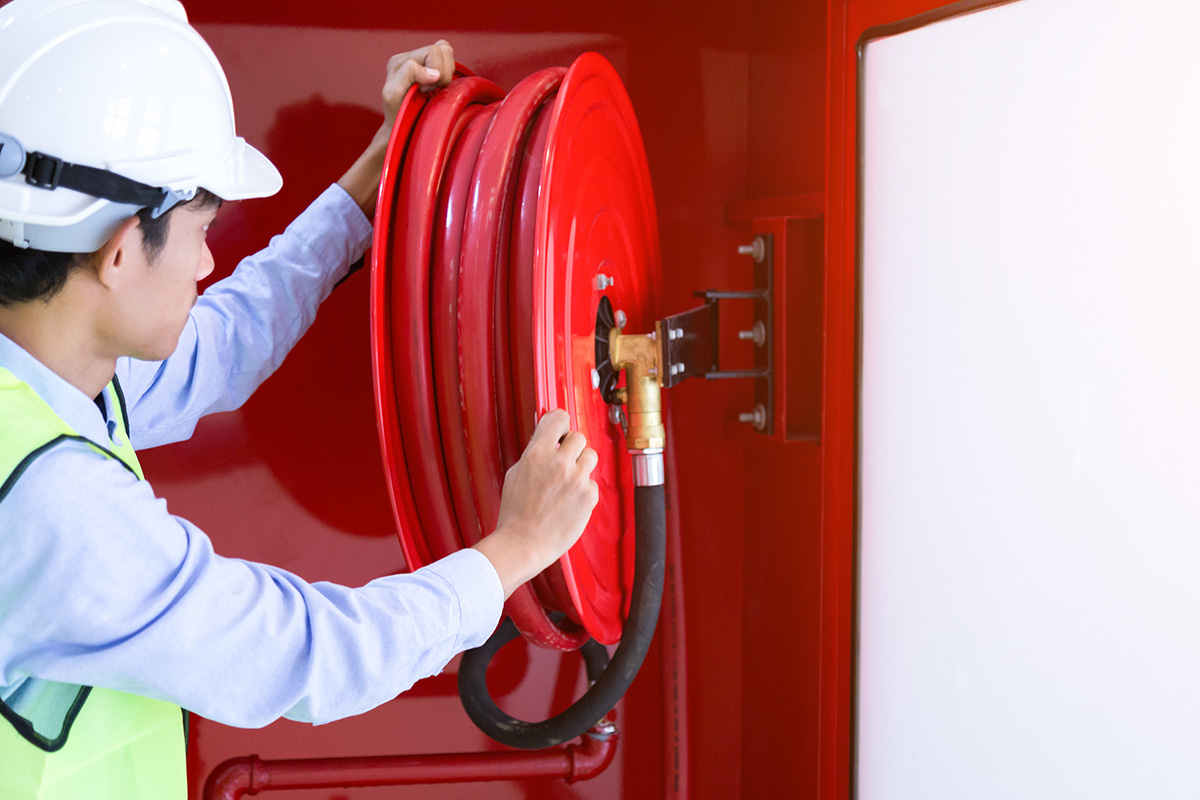Fire Hose Servicing: Importance, Best Practices, and Fire Extinguisher Survey
Fire hoses are crucial firefighting tools that play a critical role in extinguishing fires and protecting lives and property. However, like any other equipment, fire hose servicing and maintenance are required to ensure their reliability and effectiveness during emergencies. In this article, we will explore the importance of fire hose servicing, best practices for maintenance, and the role of fire extinguisher survey in ensuring fire hose readiness.
Importance of Fire Hose Servicing
Fire hoses are subjected to wear and tear due to frequent use, exposure to harsh conditions, and ageing. Regular servicing of fire hoses is essential to ensure that they are in optimal condition and ready for use when needed. Fire hose servicing involves thorough inspection, maintenance, and testing to identify and address any potential issues. By servicing fire hoses regularly, you can:
- Ensure Functionality: Fire hoses need to be functional and operational at all times to effectively combat fires. Regular servicing helps identify and rectify any defects or damages in the hoses, such as cracks, leaks, or blockages, that may hinder their performance during emergencies.
- Extend Lifespan: Fire hoses have a limited lifespan, and proper servicing can help extend their longevity. Routine maintenance, such as cleaning, drying, and storing fire hoses properly, can prevent deterioration and prolong their lifespan.
- Comply with Regulations: Fire hose servicing is often a requirement by local fire codes, regulations, and standards. Regular servicing helps ensure compliance with these regulations and ensures that fire hoses meet the necessary safety standards.
Best Practices for Fire Hose Servicing
Proper servicing of fire hoses involves a series of steps to ensure comprehensive inspection, maintenance, and testing. Here are some best practices for fire hose servicing:
- Inspection: Fire hoses should be visually inspected for any signs of damage, such as cuts, abrasions, or bulges. Couplings, nozzles, and valves should also be inspected for proper operation and any potential defects.
- Maintenance: Fire hoses should be cleaned, dried, and stored in a cool, dry place to prevent mould, mildew, and rot. Any debris or foreign objects should be removed from the hoses, and couplings should be lubricated to prevent corrosion.
- Testing: Fire hoses should be pressure tested periodically to check for leaks, weak spots, or other issues. This can be done using specialised equipment, and any deficiencies should be addressed promptly.
Role of Fire Extinguisher Survey
Fire extinguisher survey is an integral part of fire hose servicing as it ensures that fire extinguishers are in proper working condition and complement the functionality of fire hoses. Fire extinguisher survey includes inspection, maintenance, and testing of fire extinguishers to ensure their readiness for use. This survey helps identify any defects or issues with fire extinguishers, such as expired contents, damaged hoses, or faulty mechanisms, and rectify them promptly. A properly conducted fire extinguisher survey can ensure that fire extinguishers are functional, accessible, and effective in conjunction with fire hoses during firefighting operations.
FHS is a critical aspect of fire safety that should not be overlooked. Regular inspection, maintenance, and testing of fire hoses are essential to ensure their functionality, extend their lifespan, and comply with regulations. Fire extinguisher survey also plays a significant role in ensuring the readiness of fire hoses by maintaining fire extinguishers in optimal condition. By following best practices for fire hose servicing and conducting fire extinguisher surveys, you can enhance the effectiveness of fire protection measures and safeguard lives and property from fire hazards.
For more information on FH Servicing contact Total Safe UK.

